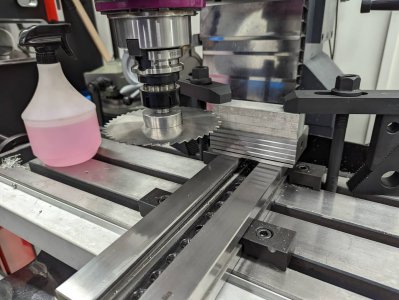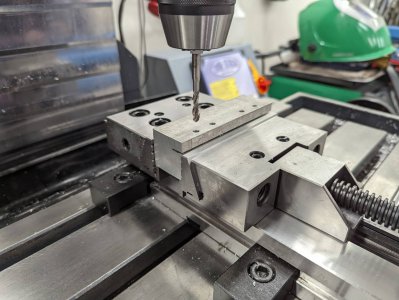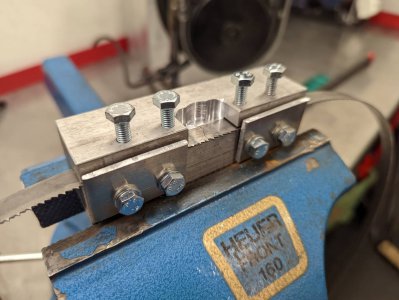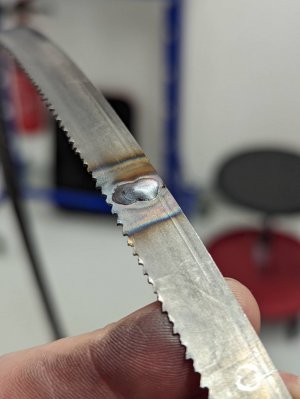I haven't done it, but if I did, I'd fuse it with no filler like you did, then heat to red at the weld with a torch, and let it air cool. That's just about what a resistance blade welder with an annealing cycle does.
Ive made hundreds of blades and now make my own at home.
Of all the various methods I've seen co workers try and I've tried myself nothing has made the welded section more resilient than heating it to blue, then letting it cool slowly.
Heating it to a dull red would work also, but I don't see it being necessary and I might not trust it if cooled too fast from red.
For electric welders I mash the anneal button until it reached the dark blue I want, then tap it at intervals while cooling to prevent it cooling too quickly.
One of the key elements I have found to be helpful is paying attention to the tooth set and profile before beginning to weld. Cut the blade to length and then look for where you can have the tooth profile and set match, then trim back each end to that spot and weld. This does not need to be perfect, but if the tooth profile is the type that varies or your weld is a little off you can have one tooth stand proud of the rest right after the wend which will stress the wend in use.
If the blade is out of line when welded or there is a proud tooth after the weld you can dress this down with a hand grinder.
The little crack left open on the backside of the above pictured blade would be a no-no on a butt weld machine as it would lead to the blade breaking, but I have no idea if this follows over to tig welding blades, never done it.





